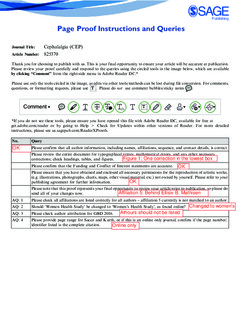| dc.description.abstract | Background
The relationship between high sensitivity C-reactive protein and migraine is unclear. The aim of this cross-sectional population-based study was to investigate the association between high sensitivity C-reactive protein and types of headache, and to evaluate the impact of insomnia on this association.
Methods
A total of 20,486 (63%) out of 32,591 invited, aged ≥40 years or older, participated in the seventh wave of the Tromsø study conducted in 2015–2016 and had valid information on headache, insomnia and high sensitivity C-reactive protein. The influence of insomnia on the association between questionnaire-based diagnoses of headache and elevated high sensitivity C-reactive protein defined as >3.0 mg/L was assessed using multiple logistic regression, estimating prevalence odds ratio with 95% confidence intervals.
Results
A total of 6290 participants (30.7%) suffered from headache during the last year. Among these, 1736 (8.5%) fulfilled the criteria of migraine, 991 (4.8%) had migraine with aura, 746 (3.6%) migraine without aura (3.8%), and 4554 (22.2%) had non-migrainous headache. In the final multi-adjusted analysis, elevated high sensitivity C-reactive protein was associated with headache (odds ratio 1.10, 95% confidence interval 1.01–1.20), migraine (odds ratio 1.17, 95% confidence interval 1.01–1.35), and migraine with aura (odds ratio 1.23, 95% confidence interval 1.01–1.53). No association was found between elevated high sensitivity C-reactive protein and migraine without aura or non-migrainous headache. The association between high sensitivity C-reactive protein and migraine was strongly dependent on insomnia status. Among individuals with insomnia, elevated high sensitivity C-reactive protein was associated with migraine (odds ratio 1.49, 95% confidence interval 1.02–2.17), and migraine with aura (odds ratio 1.59, 95% confidence interval 1.03–2.45), whereas no such relationship was found among those without insomnia.
Conclusions
In this cross-sectional study, participants with migraine, in particular migraine with aura, were more likely to have elevated high sensitivity C-reactive protein, evident only among those with insomnia. | nb_NO |
